The ASRock X299E-ITX/ac Motherboard Review: An 18-core No-Compromise Mini-ITX
by Joe Shields on December 4, 2017 8:00 AM ESTBoard Features
The diminutive board brings ATX sized functionality and features to the Mini-ITX form factor. Currently, the X299E-ITX/ac is the only Mini-ITX board out for the X299 platform so if this size board is what you want/need along with the horsepower the Skylake-X and Kaby Lake-X CPUs bring to the table, there isn't another choice.
That said, overall it is a good choice feature wise. All the basics are there from quad channel memory (support to 64GB at DDR4-4000), fast Wi-Fi capability with its 2x2 802.11ac implementation, as well as two Intel NICs for wired networking capabilities. There are two USB 3.1 (10 Gbps) ports on the back panel, one each of Type-A and Type-C, as well as using the latest Realtek ALC1220 codec with DTS connectfor audio. The high-end VRMs found on the Taichi and Gaming i9 didn't reappear here, but the 7-phase Digital PWM with DrMOS power stages didn't flinch in our testing, but were notably warmer than the other boards we tested, especially when overclocked.
About the only thing missing here is perhaps more USB ports on the back panel IO as there are 'only' six. There is also the ability to run SLI/Crossfire, through burification that seems to be possible with a riser card (not included), but we were unable to test it. Any RGB LEDs will have to come through external means using the onboard header and ASRock RGB LED software for control.
Outside of all this, the board does NOT support Kaby Lake-X CPUs, only Skylake-X. Refer to the compatibility list at the website.
| ASRock X299E-ITX/ac | |
| Warranty Period | 3 Years |
| Product Page | Link |
| Price | Newegg US |
| Size | Mini ITX |
| CPU Interface | LGA2066 |
| Chipset | Intel X299 |
| Memory Slots (DDR4) | Four DDR4 SO-DIMMs Supporting 64GB Quad Channel Up to DDR4-4000 |
| Network Connectivity | 1 x Intel I219-V 1 x Intel I211-AT 1 x Intel AC8265 802.11ac Wi-Fi Module |
| Onboard Audio | Realtek ALC1220 |
| PCIe Slots for Graphics (from CPU) | 1 x PCIe 3.0 @ x16 |
| PCIe Slots for Other (from PCH) | N/A |
| Onboard SATA | Six, Supporting RAID 0/1/5/10 |
| Onboard SATA Express | None |
| Onboard M.2 | 1 x PCIe 3.0 x4 or SATA 2 x PCIe 3.0 x4 |
| Onboard U.2 | None |
| USB 3.1 | ASMedia ASM3142 10 Gbps: 1 x Type-A 1 x Type-C |
| USB 3.0 | ASMedia ASM1074 5 Gbps: 4 x Rear Panel 1 x Internal Header |
| USB 2.0 | 1 x Internal Header |
| Power Connectors | 1 x 24-pin ATX 1 x 8-pin CPU |
| Fan Headers | 1 x CPU (4-pin PWM Only) 1 x CPU Opt/Water Pump (Smart Fan 1.5A/18W) 1 x Chassis Fan (Smart Fan) |
| IO Panel | 2 x Antenna Ports 1 x Optical SPDIF Out Port 1 x USB 3.1 Type-A Port (10 Gb/s) 1 x USB 3.1 Type-C Port (10 Gb/s) 4 x USB 3.0 Ports 2 x RJ-45 LAN Ports 1 x Clear CMOS Switch HD Audio Jacks |
Test Bed and Setup
As per our testing policy, we take a high-end CPU suitable for the motherboard that was released during the socket’s initial launch and equip the system with a suitable amount of memory running at the processor maximum supported frequency. This is also typically run at JEDEC subtimings where possible for that frequency. It is noted that some users are not keen on this policy, stating that sometimes the maximum supported frequency is quite low, or faster memory is available at a similar price, or that the JEDEC speeds can be prohibitive for performance. While these comments make sense, ultimately very few users apply memory profiles (either XMP or other) as they require interaction with the BIOS, and most users will fall back on JEDEC supported speeds - this includes home users as well as industry who might want to shave off a cent or two from the cost or stay within the margins set by the manufacturer. Where possible, we will extend our testing to include faster memory modules either at the same time as the review or a later date.
Readers of our motherboard review section will have noted the trend in modern motherboards to implement a form of MultiCore Enhancement / Acceleration / Turbo (read our report here) on their motherboards. This does several things, including better benchmark results at stock settings (not entirely needed if overclocking is an end-user goal) at the expense of heat and temperature. It also gives, in essence, an automatic overclock which may be against what the user wants. Our testing methodology is ‘out-of-the-box’, with the latest public BIOS installed and XMP enabled, and thus subject to the whims of this feature. It is ultimately up to the motherboard manufacturer to take this risk – and manufacturers taking risks in the setup is something they do on every product (think C-state settings, USB priority, DPC Latency/monitoring priority, overriding memory sub-timings at JEDEC). Processor speed change is part of that risk, and ultimately if no overclocking is planned, some motherboards will affect how fast that shiny new processor goes and can be an important factor in the system build.
| Test Setup | |
| Processor | Intel i9 7900X (10C/20T, 3.3G, 140W) |
| Motherboard | ASRock X299E-ITX/ac BIOS 1.00 |
| Cooling | Corsair H115i |
| Power Supply | Corsair HX750 |
| Memory | GSkill Ripjaws 4x8GB DDR4 3800 CL18-18-18-38 SO-DIMM |
| Memory Settings | DDR4-2666 CL16-18-18-35 2T / XMP |
| Video Cards | ASUS Strix GTX 980 |
| Hard Drive | Crucial MX300 1TB |
| Optical Drive | TSST TS-H653G |
| Case | Open Test Bed |
| Operating System | Windows 10 Pro 64-bit |
Many thanks to...
We must thank the following companies for kindly providing hardware for our multiple test beds. Some of this hardware is not in this test bed specifically but is used in other testing.
Thank you to ASUS for providing us with GTX 980 Strix GPUs. At the time of release, the STRIX brand from ASUS was aimed at silent running, or to use the marketing term: '0dB Silent Gaming'. This enables the card to disable the fans when the GPU is dealing with low loads well within temperature specifications. These cards equip the GTX 980 silicon with ASUS' Direct CU II cooler and 10-phase digital VRMs, aimed at high-efficiency conversion. Along with the card, ASUS bundles GPU Tweak software for overclocking and streaming assistance.
The GTX 980 uses NVIDIA's GM204 silicon die, built upon their Maxwell architecture. This die is 5.2 billion transistors for a die size of 298 mm2, built on TMSC's 28nm process. A GTX 980 uses the full GM204 core, with 2048 CUDA Cores and 64 ROPs with a 256-bit memory bus to GDDR5. The official power rating for the GTX 980 is 165W.
The ASUS GTX 980 Strix 4GB (or the full name of STRIX-GTX980-DC2OC-4GD5) runs a reasonable overclock over a reference GTX 980 card, with frequencies in the range of 1178-1279 MHz. The memory runs at stock, in this case, 7010 MHz. Video outputs include three DisplayPort connectors, one HDMI 2.0 connector, and a DVI-I.
Further Reading: AnandTech's NVIDIA GTX 980 Review
Thank you to Crucial for providing us with MX300 SSDs. Crucial stepped up to the plate as our benchmark list grows larger with newer benchmarks and titles, and the 1TB MX300 units are strong performers. Based on Marvell's 88SS1074 controller and using Micron's 384Gbit 32-layer 3D TLC NAND, these are 7mm high, 2.5-inch drives rated for 92K random read IOPS and 530/510 MB/s sequential read and write speeds.
The 1TB models we are using here support TCG Opal 2.0 and IEEE-1667 (eDrive) encryption and have a 360TB rated endurance with a three-year warranty.
Further Reading: AnandTech's Crucial MX300 (750 GB) Review
Thank you to Corsair for providing us with Vengeance LPX DDR4 Memory, HX750 Power Supply, and H115i CPU Cooler.
Corsair kindly sent a 4x8GB DDR4 2666 set of their Vengeance LPX low profile, high-performance memory for our stock testing. The heatsink is made of pure aluminum to help remove heat from the sticks and has an eight-layer PCB. The heatsink is a low profile design to help fit in spaces where there may not be room for a tall heat spreader; think a SFF case or using a large heatsink. Timings on this specific set come in at 16-18-18-35. The Vengeance LPX line supports XMP 2.0 profiles for easily setting the speed and timings. It also comes with a limited lifetime warranty.
Powering the test system is Corsair's HX750 Power Supply. This HX750 is a dual mode unit able to switch from a single 12V rail (62.5A/750W) to a five rail CPU (40A max ea.), and is also fully modular. It has a typical selection of connectors, including dual EPS 4+4 pin four PCIe connectors and a whopping 16 SATA power leads, as well as four 4-pin molex connectors.
The 135mm fluid dynamic bearing fan remains off until it is 40% loaded offering complete silence in light work loads. The HX750 comes with a ten-year warranty.
In order to cool these high-TDP HEDT CPUs, Corsair sent over its latest and largest AIO in the H115i. This closed loop system uses a 280mm radiator with 2x140mm SP140L PWM controlled fans. The pump/block combination mounts to all modern CPU sockets. Users are also able to integrate this cooler into the Corsair link software via USB for more control and options.
For our ITX system, a special thanks goes out to GSkill who provided us with new high-speed DDR4 SO-DIMMs. The set they gave us, F4-3800C18Q-32GRS is not currently found on the website. The 4x8GB kit is rated to DDR4 3800 @ CL18-18-18-38 with 1.35V and supports Intel's XMP 2.0 profiles.


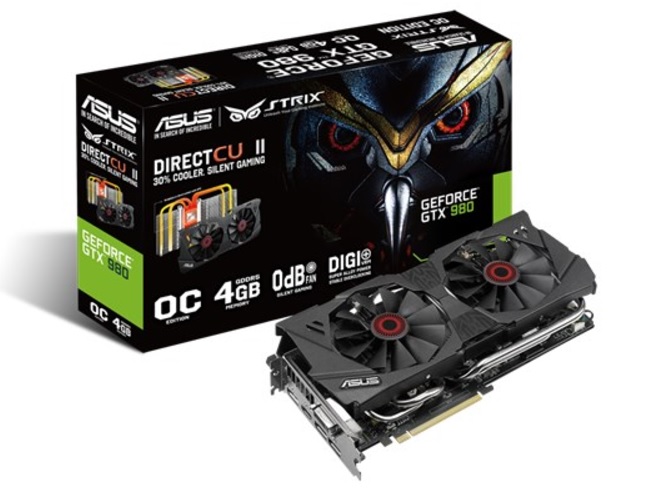

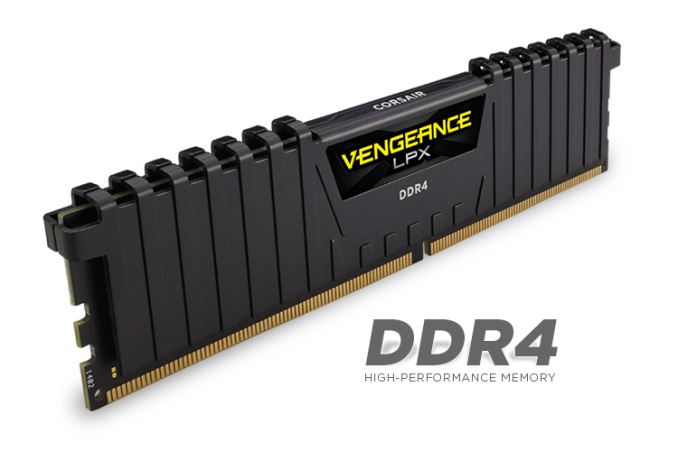
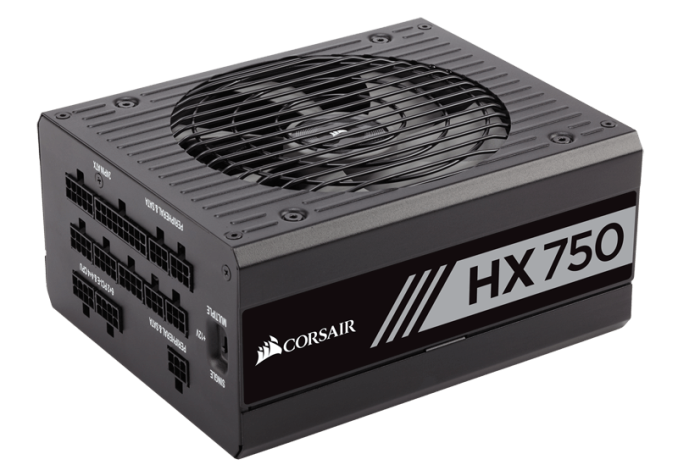
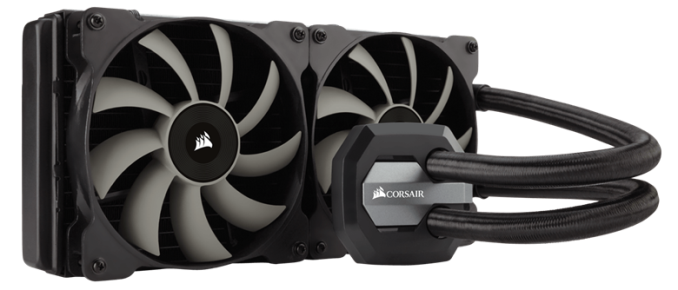
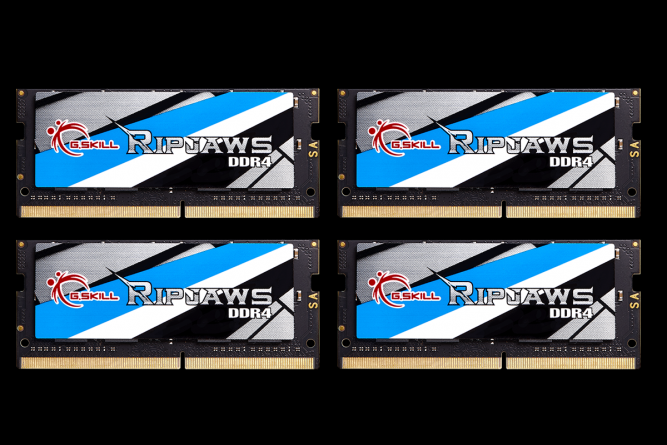








24 Comments
View All Comments
dgingeri - Monday, December 4, 2017 - link
Of course there are compromises. The processor has 44 PCIe lanes, and only 16 are able to be used thanks to there only being one slot. Even with the riser card and the M.2 slots, there are still compromises with this.Samus - Monday, December 4, 2017 - link
I've had the ASRock X99 ITX for two years. The sole compromise is literally one PCIe x16 slot, which is all 95% of people in the market for this board need. If you need more, you go ATX. Nobody is building ITX systems with SLI or mining in mind. Nobody. With the exception of maybe one SFX PSU, they can't even drive more than one high end videocard with a platform like this, and if you are using a case that holds an ATX PSU, why are you even considering an ITX board? The whole point of the system is to be compact.In other worse, this X299 follow-up is simply amazing. 9 native storage device ports on an ITX board is unheard of. Many ITX boards still have just 4 SATA ports (which, again, is all most people in the market for an ITX system are looking for since most cases will lack more than 4 storage bays.)
Gadgety - Monday, December 4, 2017 - link
"If you need more, you go ATX."Well, yes and no. I know there are users who have used the x99 with bifurcation, in those 5%. I'd like a small pc in with a top of the line gpu and need a pci-e x1 for an additional feature. The trend for small PCs certainly seems to be growing, so offering additional pci-e possiblities on small M-ITX would be nice, whether through official bifurcation possibilities or other means. I checked the potential to using an M.2 port for a pci-e card, but couldn't find an adapter.
Vatharian - Monday, December 4, 2017 - link
I am so sad that DTX didn't took off. Just a tiny little bit of real estate, most of cases already have two slots for wide GPUs, and so much more options. If this board been DTX with 2x 16x ports, Titan Xp SLI would have been possible out of the box (albeit with water cooling, of course). Or stuff powerful storage controller in one and decent 10G or 40G network card in the other port. Or stuff really anything int he other slot.Gigaplex - Monday, December 4, 2017 - link
There's always micro ATX. It's not that different to DTX.Actae0n - Monday, December 4, 2017 - link
You certainly raise a good point. However, there are some cases, such as the Fractal Design Nano S (pretty sweet case, I might add), that only support Mini-ITX and can hold an ATX PSU.dgingeri - Monday, December 4, 2017 - link
It was not my point that it didn't have a use, but rather that the article is titled "The ASRock X299E-ITX/ac Motherboard Review: An 18-core No-Compromise Mini-ITX" when in fact there is a compromise in order to get to the form factor. I don't like people stating "no compromise" when in fact there is compromise in something.tim851 - Monday, December 4, 2017 - link
The single PCI-E x16 slot is not a compromise, it's A FEATURE. That's what you buy an ITX board for.Mr Perfect - Monday, December 4, 2017 - link
Yeah, calling out ITX for only having one PCIe slot is kind of missing the point of ITX.mnoi - Wednesday, December 6, 2017 - link
I agree, the two usb-c ports should have been thunderbolt enabled at the very least.